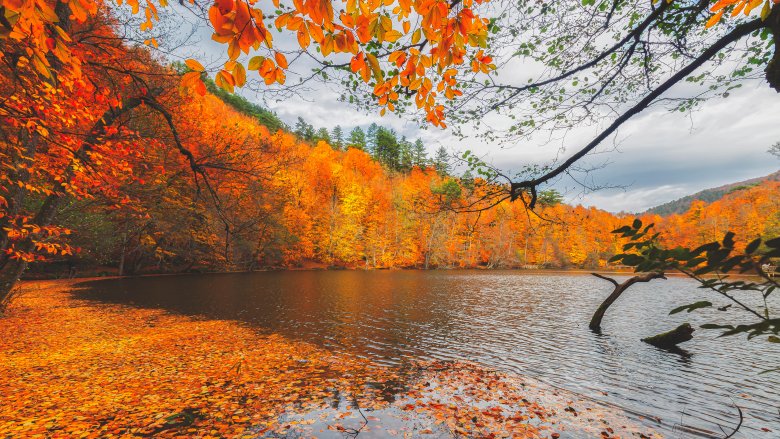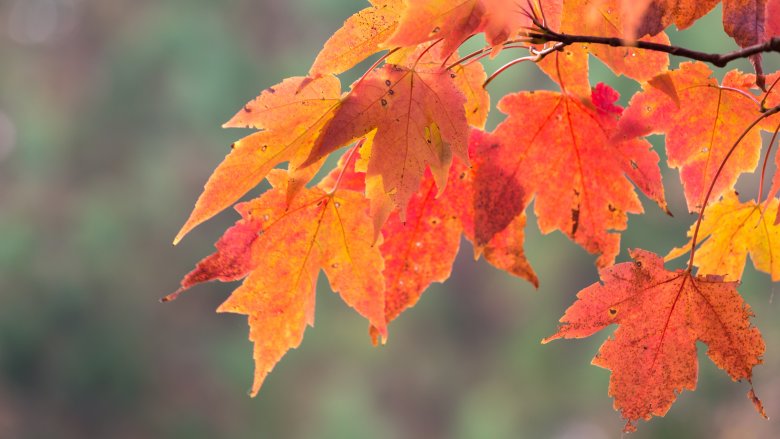The Real Reason Leaves Change Color In The Fall
Who doesn't love watching the green trees of summer turn into lovely shades of yellow, orange, and red? Who doesn't love spending all that time raking up fallen leaves only to have a bunch of neighborhood kids jump around in them and scatter them all over the front yard? Autumn is awesome.
Shockingly, the leaves don't change color and fall down just so those annoying kids will have something to jump around in. Fall colors happen because of chemical changes in the plant, triggered by the seasonal change in weather and sunlight.
What happens to leaves in the fall
According to the SUNY College of Environmental Science and Forestry, each individual leaf is kind of like its own little food factory. Leaves contain the chemical chlorophyll, which is what makes them green. Chlorophyll absorbs sunlight and then uses that energy to turn carbon dioxide and water into sugars and starch. This process continues throughout the spring and summer. Then autumn comes along and everything slows down.
During the autumn, the days get shorter and the temperatures cool down, which triggers a reduction in food processing activity in the leaf. Once that process stops, the chlorophyll starts to break down, and the green color fades. But here's the funny bit — those brilliant colors we admire during the fall are always in the leaf. Leaves contain chemicals like carotene and xanthophyll, which are the same chemicals that give certain vegetables a brilliant orange color. But we don't see those colors in the spring and the summer because they're drowned out by all of that green. When the chlorophyll goes away, the colors become evident.
There are some other things happening, too. Some leaves go straight from green to brown — that's because the chlorophyll residue mixes with the other colors in the leaf. Others turn red or even purple as they undergo different chemical changes. And the leaves don't always fall, either. Some species of oak, for example, will keep their dead leaves until the new ones start to grow in the spring.
So as much as we'd like to think those color changes are for our benefit, they are, just like everything else in nature, a biological process. Happily for that autumn mood and all those annoying neighborhood kids, it's a biological process that happens to have the side effect of looking cool.

